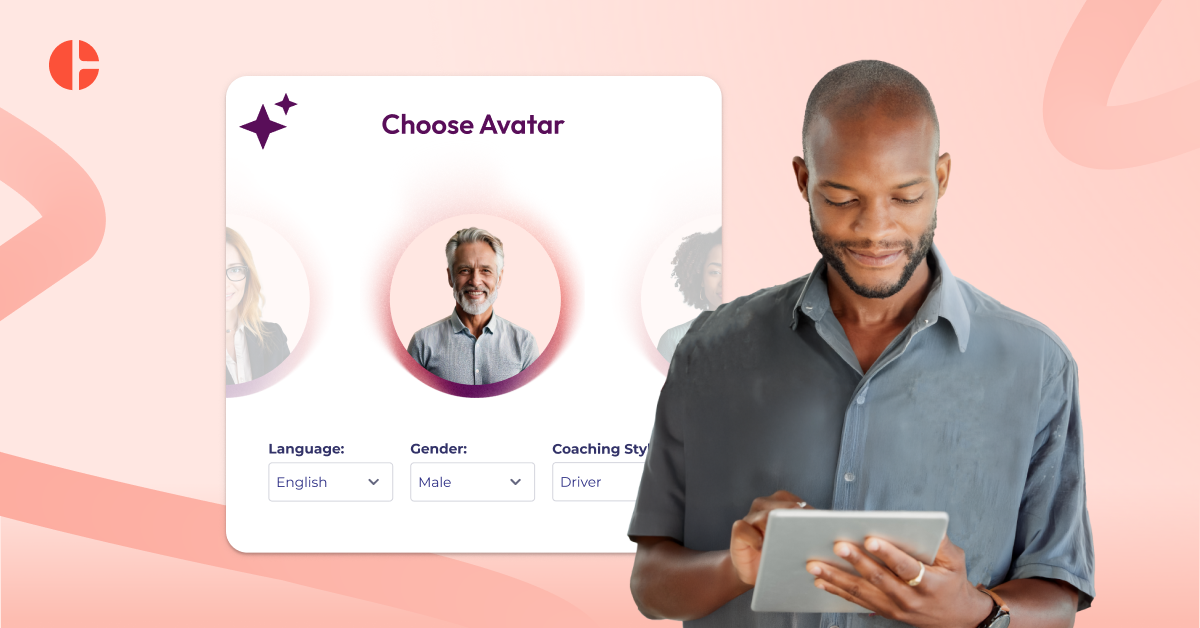How Do You Define Workplace Diversity?

Workplace diversity is a term used to describe an organization that internally employs a workforce composed of people with a wide range of characteristics like race, age, ethnicity, education, sexual orientation, religion, physical disability and ability, culture difference, language, geographical orientation and gender.An organization with workplace diversity has employees and leaders with a range of experiences and characteristics. Workplace diversity has many benefits for companies that take it seriously (from an external and internal perspective). However, it doesn’t mean the process of implementing diversity in the workplace has no challenges.
Why choose workplace diversity initiatives?
Workplace diversity, in this modern and globally connected market and society, is becoming more necessary to companies rather than waving banners to indicate the commitment they have to embracing difference.Diverse companies can sell their products and services worldwide and interact with different prospects, reaching a wide group of individuals. The diversified workforce is the main tool companies need to be international, reach many people, and sell their products globally.
What are the importance of workplace diversity
A diverse workforce based on religion, age, gender identity, nationality, sexual orientation, national origin and race brings diverse viewpoints to the company.Among other things, diversity management can help your company develop new ways of doing things, catering for customers, and developing new products. Considering workplace diversity statistics on the effects of inclusion initiatives, you will realize it offers many benefits.Therefore, many companies have no issues embracing diversity policies and tools necessary to increase employees’ diversity levels: the first step is a diverse workforce. Note that diversity in the workplace does not mean workplace inclusivity.It is important to make workplace diversity a priority and have the next step in mind: coming up with a corporate culture that makes individuals from different backgrounds feel included. Inclusivity is among the most important keys to creating and maintaining workplace diversity.Therefore, below are some of the benefits associated with workplace diversity.
Wider job opportunity
Gone are the days where employees were looking for more than one job to get enough income. Nowadays, employees are looking for companies where they can feel accepted, grow and be challenged. Therefore, businesses that embrace diversity have a high attraction rate for a wider candidate range looking for a progressive workplace.Millennials are the most diverse group in population history. Many job seekers and employees believe in the importance of a diverse workforce when evaluating job offers and companies. A liberated company will seek diversity in candidates to access a wider talent pool for better growth and output.Being selective in hiring people is important, but being overly picky will reduce the number of candidates to consider if your selection is based on traits that do not matter most in your company. That’s why liberated companies embrace diversity in thoughts, ethnicity, background and other elements to find good hires.
More innovation
Diversity translates to innovation. Consider this example: if your company is made of a homogenous group, chances of having similar problem-solving skills, thought patterns and other innovation management initiatives is very high. Sameness leads to poor creative solutions.On the other hand, heterogeneous employees will bring about unique perspectives and different personal experiences that can lead to thought breakthroughs. This is the same reason why many companies go for important meetings offsite.
New viewpoint
Hiring individuals from diverse cultures, nationalities and backgrounds bring in fresh standpoints on the stable. This can result in many benefits like increased productivity and better problem-solving skills. For example, you will gain more if you have a team that can split strategically to gather information rather than a team that thinks the same and goes in the same direction.Bringing a new eye view into the company can be intimidating for some hiring and toxic managers. Many people fear the introduction of unpopular ideas or potential awkwardness. However, many studies have proven that diverse teams improve decision-making abilities.
Increase productivity and profit
Many workplace diversity articles and studies show how diverse teams perform to bring more profit into the business. Companies that embrace racial and ethnic diversity in management trends have higher financial returns and improved financial performance.
Better employee and employer performance
When the working environment represents a variety of backgrounds, ways of thinking and culture, employees and employers will feel comfortable and free being themselves. This system will promote corporate management tools like performance management, leading to happier and more productive employees.
How to support workplace diversity in your business
Establishing workplace diversity and following through can sometimes be a daunting task for many organizations. However, below are some of the most common and smart ways to support workplace diversity.
Honor and acknowledge different culture and religion practices
As a manager, introduce policies or systems for acknowledging various religious and cultural activities to benefit engagement, succeed in diversity and increase productivity. One of the best ways to establish these policies is to focus on celebrations and holidays. The organization will benefit greatly from higher retention when employees see their organization support holacracy and are committed to diversity.
Work toward gender equality
If you want an inclusion culture built on transparency and trust, be ready to discuss gender disparities. For example, gender pay is a big topic to talk about with your senior management. Therefore, managers need to be clear and transparent when communicating policies and new systems.Promote female leadership in some departments to ensure they have a say when it comes to matters concerning the whole organization. Companies with gender pay or leadership imbalance have difficulty when making decisions that affect the workforce and productivity.With clarity, present the strategies the company will use to address the gap between genders hence building your workplace diversity network.
Using the minority group during employee engagement survey segmentation
Many companies practice pulse surveys. The only challenge with companies practicing annual pulse surveys is that they often ignore data segmentation based on generation, ethnicity, gender, geographical orientation and others. Most HR trends advocate checking the total number. However, this will lead to missing out on opportunities to see the problems facing those groups.
Establish and build up anti-discriminatory policies
It is not enough to establish language and gender diversity. Strengthening anti-discrimination and leadership commitment policies are critical in coming up with strong workplace diversity. Every company is different; hence they can use different approaches that make sense to them to succeed in an inclusive workplace.Matrix management approach will ensure collaboration between employees and between employees and employers. Employees will be free to talk to others and report to different bosses; hence they will feel less discriminated against and outlawed.
Building a multigenerational workforce
Nowadays, millennials take a huge part in the workforce. A work environment that can accommodate and recognize multiple generations is vital in establishing a successful diverse, inclusive workforce. Involving millennials in your digital culture plans will help the organization since they are tech-savvy.Having different age groups will come in handy in some departments like communication. Younger millennials will be more comfortable using simple communication channels like chat functions, while older millennials might not see it as fit at a particular moment.Communication experts in your organization need to develop a channel to effectively and efficiently send messages to all employees. This will promote technology innovations like managing remote employees at a centralized location. Remote management will help cut down costs.
Executive team evaluation
It is important to know if your executive team has what it takes to embrace workplace diversity and inclusion. Your executive team makeup signifies greatly to the frontline employees, other stakeholders, partners and customers. The top management has a huge say when it comes to a company’s culture.Therefore, it is important to diversify your top management, including ethnicity diversity, gender diversity and sexual orientation. Ensure both men and women are well and equally represented as well as people from different religious and cultural backgrounds.
Workplace diversity challenges
Despite the above benefits of diversity in the workplace, some challenges come with this management tool. Below are some of the workplace diversity challenges most organizations face.
Following design to implementation process
Establishing a well-detailed and thoughtful diversity program can be easy but lack people to implement it. Because of that, ensure you have the support, resources and team in place to carry on your diversity initiatives. Securing a leadership buy-in is essential to have the support needed to move forward. Ensure your team (frontline employees and executives) got your back and is ready for action.For example, a company can develop a dedicated resource such as the department of diversity and inclusion. This way, the company can hold a specific body accountable for the feedback or results.
Aligning unique organizational goals with diversity practices
Organizations have unique goals; hence establishing workplace diversity requires a huge commitment since you cannot borrow from another organization. Therefore, it is the work of the managers and senior management to implement a diversity practice that aligns with the unique set of goals in the business to be successful. Analyze the managerial and economic issues using neuromanagement techniques to come up with the best diversity practice to suit your goals.Don’t be pressured by other organizations to copy and paste a certain inclusion initiative. The diversity-focused survey can help your organization identify specific gaps to allocate enough resources.
Management training
Diversity requires the correlation and cooperation of every organization member to be successful (it does not happen in silos). Managers should play a big role in how to carry out the set initiatives. Because of that, the company needs to invest more in management training and practices to help employees and employers understand the goals of the diversity program.For example, suppose your company wants to implement frugal innovation. In that case, you should use things like relationship building, data combination and inclusion experts to develop a perfect solution.
Internal resistance
Not everyone in an organization will support the idea of workplace diversity. Some individuals are uncomfortable with what they know less about; hence they will resist. Others might want to oppose diversity initiatives for no valid reason.However, as an employer or leader, you need to put effort into educating your employees about the importance of diversity regardless of the reason for resistance. Always remember an effective solution to internal resistance is making people understand your views.
Controlling bias
Humans are naturally biased. Most human decisions are at some point belief, intuition and biased-based. Even when the management has the best intention, some employees and or employers might bring bias into the workplace. This will make introducing new diverse systems and techniques like agile project management difficult.The company needs to further their investment in training to overcome biased ideas and feedback. Therefore, you can trust CoachHub (a professional coaching solution) when it comes to offering international, experienced and certified professional coaching experts. Our main objective is to support your manager to install a working workplace diversity program.
FAQ
Unlike content-first platforms or one-size-fits-all solutions, CoachHub combines global scalability, measurable outcomes, and coaching tailored for regulated, performance-driven environments. We're not just here to train, we partner to transform.
Yes. Coaching builds inclusive leadership, empathy, and adaptability. It equips managers to lead multi-generational teams and align diverse expectations across seniority levels and skill sets.
By focusing on resilience and mindset shifts. Our coaching solutions give managers and teams the tools to stay energised and engaged in high-pressure, regulated environments. This helps them maintain clarity, sustain performance, and adapt confidently through continuous change.




.svg)


.svg)



.png)



